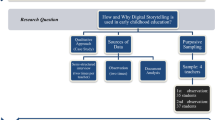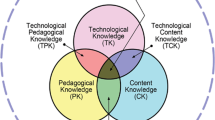Abstract
Storytelling is an effective educational strategy to empower narrative, creativity, critical and divergent thinking, communicative and literary skills. Storytelling relies on narrative capabilities, such as literary artifices defined by the Italian writer Gianni Rodari in his masterpiece “Grammar of Fantasy” to teach children how to create stories. While narratives and principles for empowering storytelling skills are widely explored, educators and children are rarely supported in applying these theories by technological tools. To encourage children to improve their creativity, we proposed Novelette, a digital learning environment to support Rodari-style storytelling.
As engagement in education is often correlated to learning, in this article, we focus on the engagement perspective in inventing and telling stories by Novelette. We report an in-presence activity with 49 children, aged 10 years old, held in a formal setting at school. An engagement questionnaire was administered to understand whether children were engaged in telling stories by Novelette. This paper offers a descriptive statistical analysis of the questionnaire results, which are discussed to distil lessons for future engaging digital storytelling activities at school.
Access this chapter
Tax calculation will be finalised at checkout
Purchases are for personal use only
Similar content being viewed by others
Notes
- 1.
Novelette homepage: http://www.isislab.it:19984/en/home-page-2/
Novelette source code: https://github.com/routetopa/storylet.
- 2.
- 3.
References
Survey on creativity - results (2020). https://www.schooleducationgateway.eu/en/pub/viewpoints/surveys/survey-on-creativity.htm. Accessed 11 May 2021
Addone, A., et al.: Visual storytelling by novelette. In: 2020 24th International Conference Information Visualisation (IV), pp. 723–728. IEEE (2020)
Arendt, H.: The Recovery of the Public World. St. Martin’s Press (1979)
Aylett, R.S., Louchart, S., Dias, J., Paiva, A., Vala, M.: FearNot! an experiment in emergent narrative, pp. 305–316. Springer, Heidelberg (2005)
Berendsen, M.E., Hamerlinck, J.D., Webster, G.R.: Digital story mapping to advance educational atlas design and enable student engagement. ISPRS Int. J. Geo Inf. 7(3), 125 (2018)
Bruner, J.: Acts of Meaning. Harvard University Press, Cambridge (1990)
Cachia, R., Ferrari, A., et al.: Creativity in schools: A survey of teachers in Europe. Technical report, Joint Research Centre (Seville site) (2010)
Cheng, J., Kang, L., Cosley, D.: Storeys: designing collaborative storytelling interfaces. In: EA on Human Factors in Computing Systems, pp. 3031–3034 (2013)
Chiang, M.H.: Exploring the effects of digital storytelling: a case study of adult l2 writers in Taiwan. IAFOR J. Educ. 8(1), 65–82 (2020)
Collins, F.: The use of traditional storytelling in education to the learning of literacy skills. Early Child Dev. Care 152(1), 77–108 (1999)
Engen, B., Giaever, T., Mifsud, L.: ‘it’s a fairy tale’ using tablets for creating composite texts. J. Interact. Learn. Res. 29, 301–321 (2018)
Giannakos, M.N., Divitini, M., Iversen, O.S.: Entertainment, engagement, and education: foundations and developments in digital and physical spaces to support learning through making. Entertainment Comput. 21, 77–81 (2017)
Kılıçkaya, F.: Learners’ perceptions of collaborative digital graphic writing based on semantic mapping. Comput. Assist. Lang. Learn. 33(1–2), 58–84 (2020)
Kim, D., Li, M.: Digital storytelling: facilitating learning and identity development. J. Comput. Educ. 8(1), 33–61 (2021)
Ligorio, M.B., Talamo, A., Pontecorvo, C.: Building intersubjectivity at a distance during the collaborative writing of fairytales. Comput. Educ. 45(3), 357–374 (2005)
Marsella, S.C., Johnson, W.L., Labore, C.M.: Interactive pedagogical drama for health interventions. In: Artificial Intelligence in Education, pp. 341–348 (2003)
Martines, F.: Fabula. https://www.scribis.it/fabula/index.html
Mazzone, E., Iivari, N., Tikkanen, R., Read, J.C., Beale, R.: Considering context, content, management, and engagement in design activities with children. In: International Conference on Interaction Design and Children (IDC), pp. 108–117. ACM (2010)
McAleese, S., Kilty, J.M.: Stories matter: reaffirming the value of qualitative research. Qual. Rep. 24, 822–845 (2019)
Min, W., Frankosky, M.H., Mott, B.W., Wiebe, E.N., Boyer, K.E., Lester, J.C.: Inducing stealth assessors from game interaction data. In: Artificial Intelligence in Education, pp. 212–223. Springer International Publishing (2017)
Mitgutsch, K., Alvarado, N.: Purposeful by design?: A serious game design assessment framework. Found. Digit. Games 12 (2012)
Moradi, H., Chen, H.: Digital storytelling in language education. Behav. Sci. 9(12), 147 (2019)
Navigli, R., Ponzetto, S.P.: BabelNet: the automatic construction, evaluation and application of a wide-coverage multilingual semantic network. Artif. Intell. 193, 217–250 (2012)
Noel, L.A., Liu, T.: Using design thinking to create a new education paradigm for elementary level children for higher student engagement and success (2016)
Rodari, G.: Grammatica della fantasia. Introduzione all’arte d’inventare storie (1973)
Rowe, J., Shores, L., Mott, B., Lester, J.: Integrating learning, problem solving, and engagement in narrative-centered learning environments. Int. J. Artif. Intell. Educ. 21, 115–133 (2011)
Smith, B., Monforte, J.: Stories, new materialism and pluralism: Understanding, practising and pushing the boundaries of narrative analysis. Methods Psychol. 2, 100016 (2020)
Tong, C., et al.: Storytelling and visualization: an extended survey. Information 9(3), 65 (2018)
Topkaya, Y., Doğan, Y.: The effect of educational comics on teaching environmental issues and environmental organizations topics in 7th grade social studies course: a mixed research. Egitim ve Bilim 45(201) (2020)
Vassilikopoulou, M., Retalis, S., Nezi, M., Boloudakis, M.: Pilot use of digital educational comics in language teaching. Educ. Media Int. 48(2), 115–126 (2011)
Wahjuningsih, E., Santihastuti, A., Kurniawati, I., Arifin, U.: “Storyboard that” platform to boost students’ creativity: can it become real? In: IOP Conference Series: Earth and Environmental Science, vol. 485, p. 012095 (2020)
Yang, Y.F.D.: Multimodal composing in digital storytelling. Comput. Compos. 29(3), 221–238 (2012)
Zipes, J.: Creative Storytelling: Building Community/Changing Lives. Routledge (2013)
Acknowledgments
We thank the school chief of the Convitto Nazionale Giordano Bruno, Rocco Gervasio; Cristina Correra, Anna Razzano, and Ippolita Visco, participating children of classes 4 A, B, C and their parents.
Author information
Authors and Affiliations
Corresponding author
Editor information
Editors and Affiliations
Rights and permissions
Copyright information
© 2022 The Author(s), under exclusive license to Springer Nature Switzerland AG
About this paper
Cite this paper
Addone, A., Palmieri, G., Pellegrino, M.A. (2022). Engaging Children in Digital Storytelling. In: De la Prieta, F., et al. Methodologies and Intelligent Systems for Technology Enhanced Learning, 11th International Conference. MIS4TEL 2021. Lecture Notes in Networks and Systems, vol 326. Springer, Cham. https://doi.org/10.1007/978-3-030-86618-1_26
Download citation
DOI: https://doi.org/10.1007/978-3-030-86618-1_26
Published:
Publisher Name: Springer, Cham
Print ISBN: 978-3-030-86617-4
Online ISBN: 978-3-030-86618-1
eBook Packages: Intelligent Technologies and RoboticsIntelligent Technologies and Robotics (R0)




